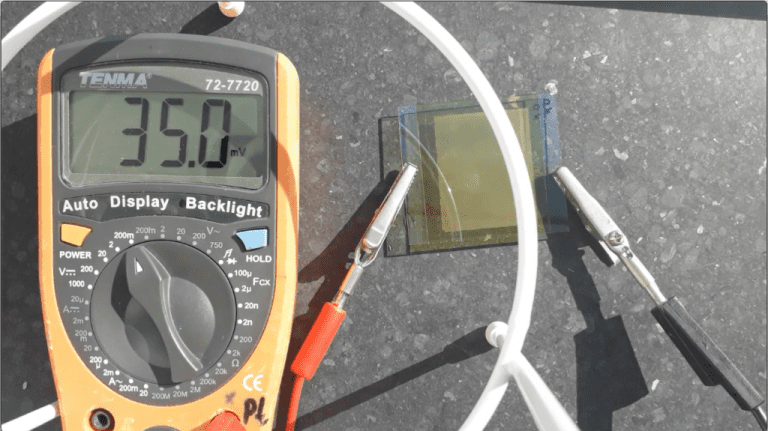
(Photo: TU Delft)
The dream of transparant solar cells and power-generating windows has come a bit closer. Such dye-sentised solar cells contain a layer of titanium dioxide or ‘titania’. Current production of this material requires high temperatures and advanced vacuum technology. Not anymore.
Members of Dr Duncan McMilland’s bio catalysis group (Applied Sciences) have found a simple and environmentally friendly alternative. They wrote about it in Advanced Sustainable Systems, master student Edward van Amelrooij being first author.
The TU Delft researchers describe how they dip-coated a substrate in a solution with an enzyme called papain (found in papayas). They then put it in the oven to dry. To add multiple layers, they simply repeat the dip and dry process.
n the oven, organic compounds such as enzymes evaporate at about 400 Celsius. What remains is a very porous layer of titania. Porous is good – the large active surface area makes it more efficient when used in solar cells.
As a proof of principle, Amelrooij made a 15 layer titania stack, added a photo-sensitive dye and demonstrated the device’s photovoltaic activity. (JW)
Do you have a question or comment about this article?
j.w.wassink@tudelft.nl

Comments are closed.